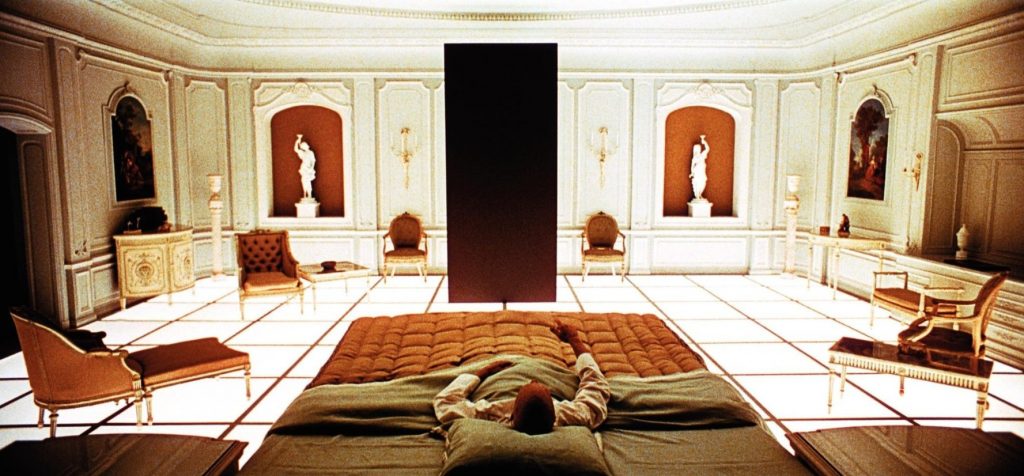One brilliant idea can make or break a screenwriter’s career. That’s what most people think. And the ones who have really made it—writers like the Coen Brothers, James Cameron, Oliver Stone—seem to be brilliant idea factories. They seem to have an inside line to what audiences want, what makes them cry and laugh, and what makes their hearts race. What makes them stay until the end of the movie, and what makes them come back again and again.
Everything rests on how the audience feels about the film. And this anticipation of the audience’s reaction drives every screenwriter crazy. When we write a funny line, we wonder if the audience will laugh. When we write something we think they’ll hate, we cross it out.
Learn about the ghost audience and stamp it out
This “ghost audience,” as we’ll call it, sitting in the back of our minds, watching and judging us and our screenplays, is the root of most writer’s block. It is also the reason mediocre screenwriters tend to stay mediocre. The ghost audience stares them down until they back away from the page. They resist taking creative risks because it’s simply just easier than facing the ghost.
And, what happens when you don’t take creative risks? You use only what has worked before, the old-and-tired plot devices and cliché characters that bring comfort and familiarity.
But comfort and familiarity are short-term illusions. They rarely lead an artist to innovation, and they never show the way to real brilliance.
To create a screenplay that can work like rocket fuel for your writing career—to grasp that one idea that can change everything—a writer has to take risks. There is no other way. Fate does not reward those who play to the ghost audience. So, in order to get to the risk, you’ve got to get rid of the ghost.
Focus on what’s most important to you
When you sit down to write, no matter where you are, take 30 seconds and close your eyes. Picture your ghost audience. Who’s in there? Look at the faces. Don’t be surprised if you see critical relatives or friends show up, or people from your past. But don’t worry. You don’t have to get caught up in judgments about why you’re seeing them, or who they are. Acknowledge the audience, and close the curtain on it.
Now, you’re ready to write, and this time you’re writing for yourself. Tell yourself there’s no audience for this one. This one goes into a safety deposit box, and it will never see the light of day. Take every risk you’ve ever wanted to take. Open yourself up. Jump off the cliff. Dive into your creative ocean and stop worrying about whether you can swim. If it’s your ocean, you’ll make it. You have the strength inside you to explore the wonders of the deep and then make it back to the shore.
Night of the Living Dead. Photo courtesy: A Image Ten Production
Taking creative risk when writing isn’t easy, and it will definitely be uncomfortable at first. But this is the secret of the masters—the truly brilliant ones whose movies have brought you to your emotional knees. Stanley Kubrick’s 2001: A Space Odyssey received brutal criticism before it drew a cult following that has lasted for decades. And people hated George A. Romero’s Night of the Living Dead when it first came out. But now the 1968 horror film is seen as a classic that has inspired several other film and TV shows in the genre.
Both Kubrick and Romero came to a moment when they had to bet it all and take the creative risk. They didn’t know if it would work out. They fought their own war against the ghost audience. They didn’t allow their very real dreams to be shot down by the fear of some possible unfavorable reaction.
A look at some of the most popular Sci-Fi movies of all time
Try this exercise to let creativity flow
Here is a simple exercise that can help you uncover the emotional blocks that hold you back in your writing. Complete the following sentences about your fears with the first thought that comes to mind:
I’d love to take more creative risk in my writing, but…
The worst thing that could happen if I risk too much in my writing is…
Read the completed sentences over to yourself. Now, flip them around so that they state a positive intention.
For example:
I’d love to take more creative risk in my writing but I’m scared I’ll be rejected.
Becomes:
I know there is a place for my work. I welcome the opportunity for it to be accepted.
And:
The worst thing that could happen if I risk too much in my writing is that I’ll ruin my career.
Becomes:
Healthy risk brings passion and growth to my career.
You can complete as many fear statements as you wish, and then flip them around in as many ways as you want. The essential thing is that you begin to uncover what you’re afraid of and why.
Climb the highest mountain inside yourself and then dive off that cliff. The more you write what you really want to write, what you know is the story you’re supposed to write and no one else, the more the ghosts in your audience will fade into nothing. And then one day they’ll be replaced by real people, the people who have been waiting all along for your brilliant idea.
